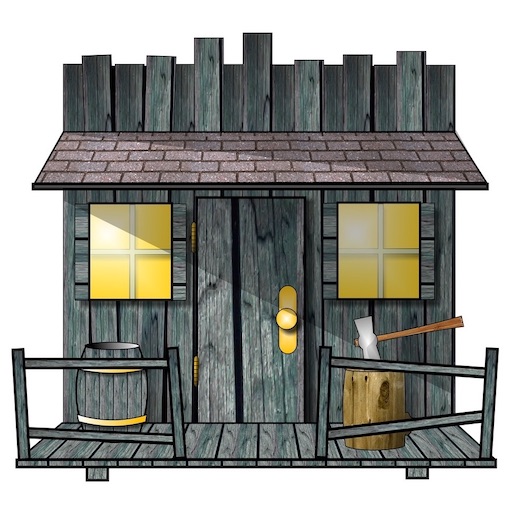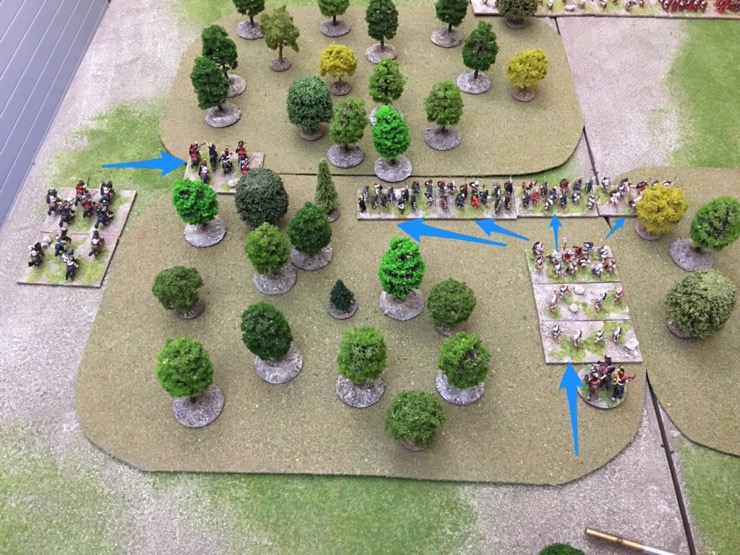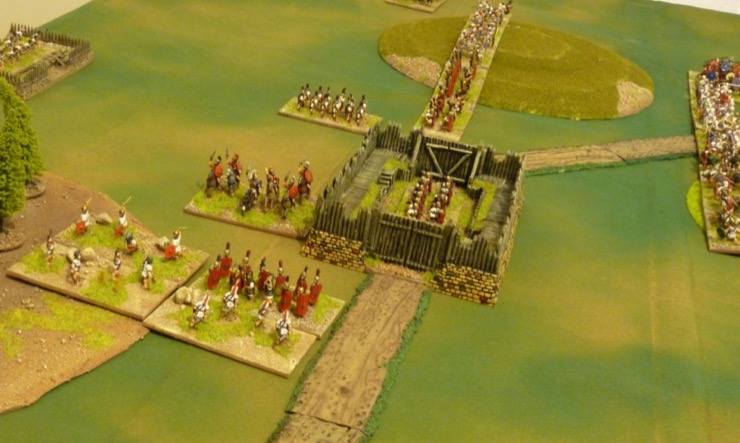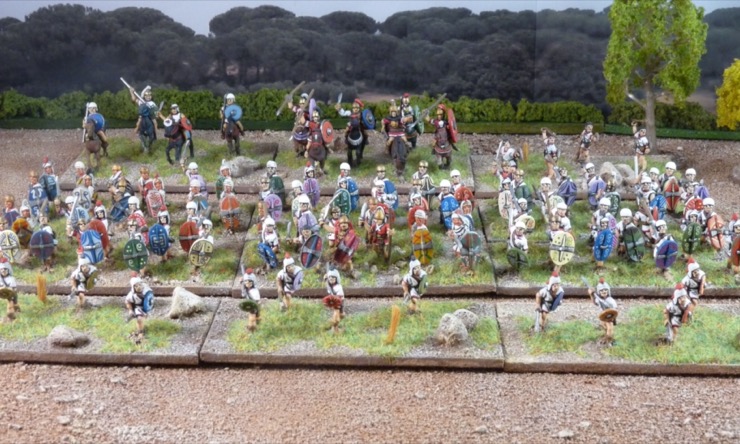We played Big Base Triumph in the Punic Wars – liked the Triumph rules but thought some of the troop types sucked. To really challenge ourselves and test out that impression, we played another, bigger, game with Iberians on the table in force. So “Light foot” for both Scutarii and Caetrati and “Javelin Cavalry” for Roman, Numidian, Carthaginian, big shield Iberians, and small shield Iberians. I felt, somehow, I was about to rub salt in the wounds. Of course this is Punic Wars.
Summary: Romans (Chris, Adam) beat Allied Carthaginian (Jamie) and Iberians (Steven)








